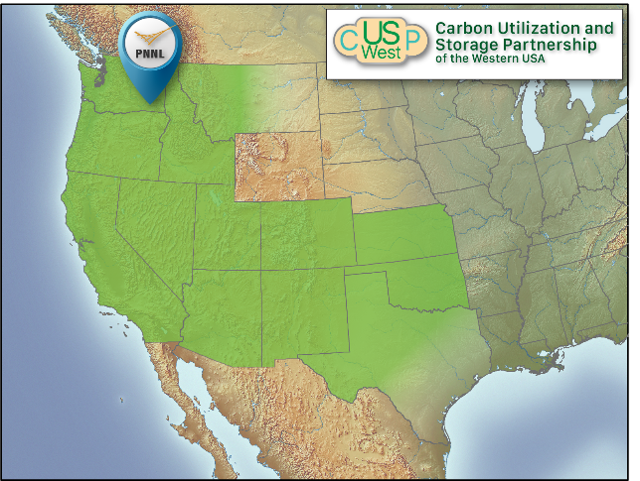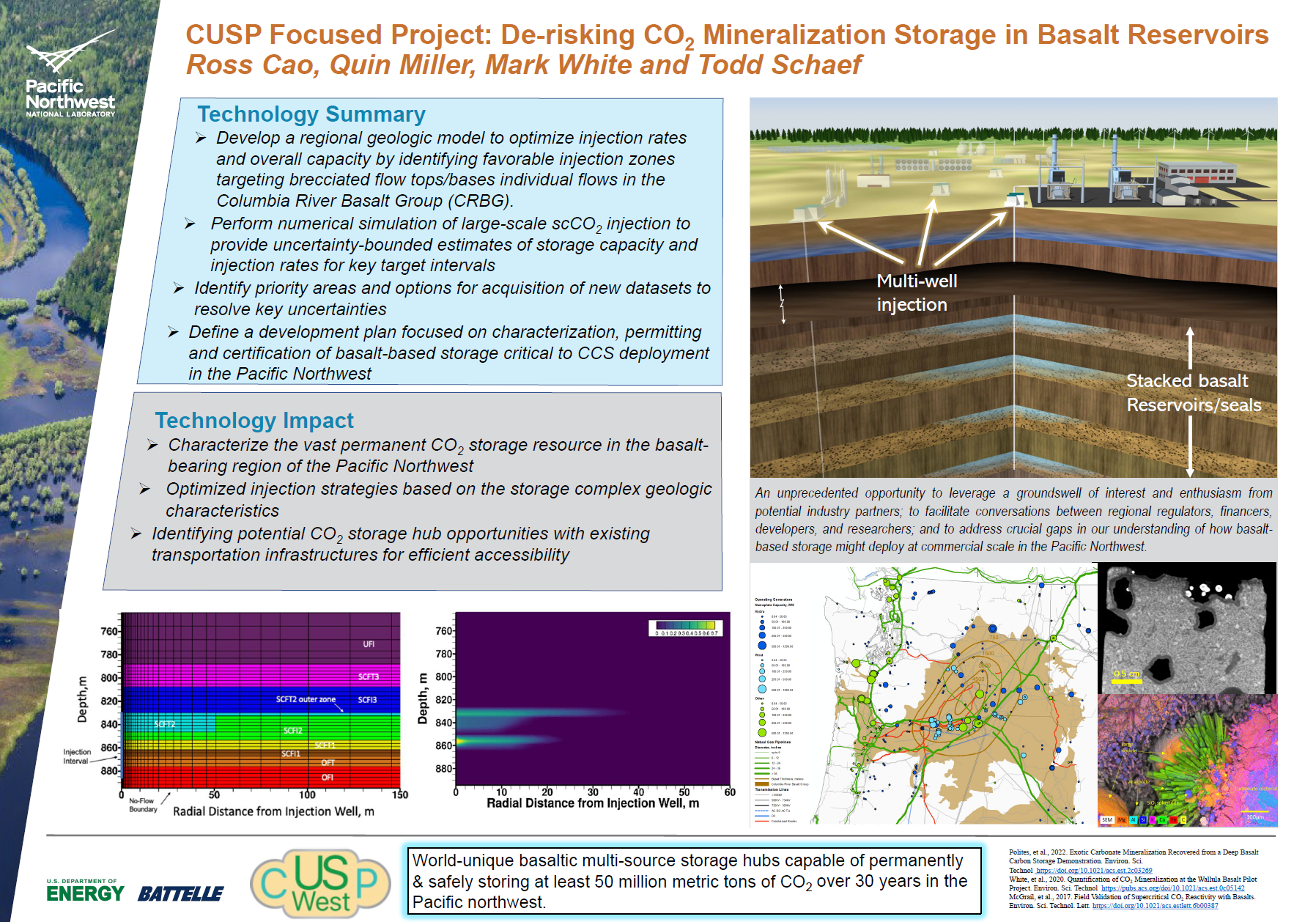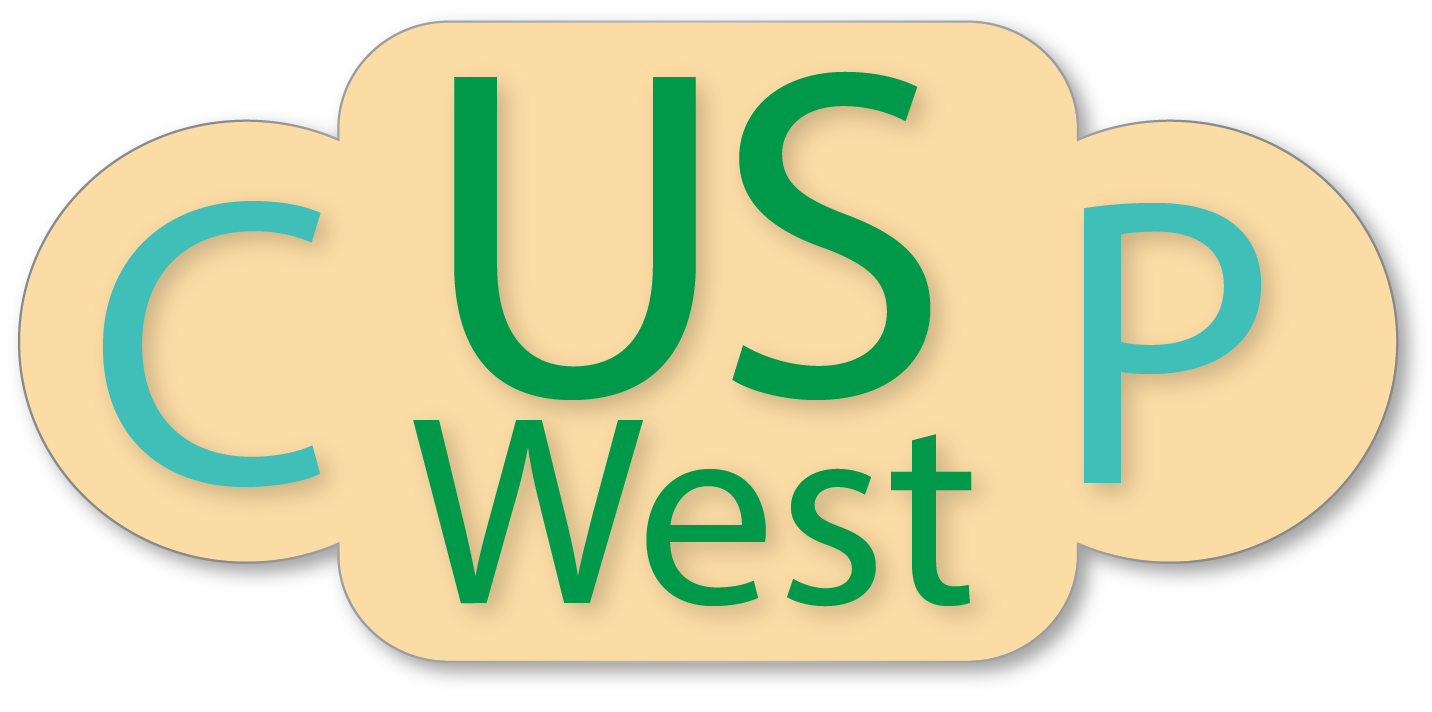Derisking CO2 Mineralization Storage in Basalt Reservoirs
CUSP Team
Project Lead: Todd Schaef (PNNL)
Sub-Contract: Washington State University
Primary Goals
to address research gaps crucial to derisking and demonstrating commercial scale basalt-hosted carbon storage, and to provide critical information to key stakeholders and developers seeking CO2 storage opportunities in the Pacific Northwest and beyond.
Impact on Carbon Storage
Validation of simulation, characterization, and monitoring approaches necessary to support successful Class VI application and demonstration for basalt reservoirs.
Project Duration
24 months


Project Objectives
Address Gaps/Barriers to Commercialization of CCS projects in Basalts.
Key tasks:
- Regional Geologic Model
- Numerical Simulation
- Preliminary Site Screening
- Characterization, Permitting and Development Planning
- Stakeholder Engagement

Project Description
The Pacific Northwest National Laboratory (PNNL) is collaborating with the Washington State Department of Natural Resources (WA-DNR) on the CUSP focused project seeking to further the knowledge about CO2 storage in basalt. In 2013, PNNL led the injection of 1,000 tons of supercritical CO2 into a basalt reservoir underlying Boise Cascade’s Wallula paper mill. Post-injection data and modeling continue to demonstrate mineralization rates consistent with those observed in the lab, suggesting that ~60% of the CO2 injected into the Columba River Basalt Group had been incorporated into carbonate minerals within two years of injection. Thus, offering significant reduction in overall project risk and post-injection site-care period. PNNL is developing geologic and numerical modelling approaches to track the transportation as well as the mineralization processes. Nonetheless, the mineralization in the basalt systems offer the benefit of reducing the risk of CO2 leakage from the reservoir. PNNL is working to address the gaps and barriers to basalt-CCS commercialization and develop a business case (source, demand, utilization, transport, storage, and other relevant considerations). The work process is to (1) create a regional geologic model, (2) realize numerical simulations of CO2 injection in basalt, (3) carry out preliminary site screening and (4) extend the reservoir characterization, support permitting and development planning.Polites, E.G., Schaef, H.T., Horner, J.A., Owen, A.T., Holliman Jr, J.E., McGrail, B.P. and Miller, Q.R., 2022. Exotic Carbonate Mineralization Recovered from a Deep Basalt Carbon Storage Demonstration. Environmental Science & Technology. https://doi.org/10.1021/acs.est.2c03269
White, S.K., Spane, F.A., Schaef, H.T., Miller, Q.R., White, M.D., Horner, J.A. and McGrail, B.P., 2020. Quantification of CO2 mineralization at the Wallula basalt pilot project. Environmental Science & Technology, 54(22), pp.14609-14616. https://pubs.acs.org/doi/10.1021/acs.est.0c05142
McGrail, B.P., Schaef, H.T., Spane, F.A., Cliff, J.B., Qafoku, O., Horner, J.A., Thompson, C.J., Owen, A.T. and Sullivan, C.E., 2017. Field validation of supercritical CO2 reactivity with basalts. Environmental Science & Technology Letters, 4(1), pp.6-10. https://doi.org/10.1021/acs.estlett.6b00387

